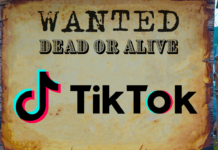The widening use of new consumer technologies by employees within the enterprise is creating a second Internet revolution, according to Gartner, Inc.
In the Gartner podcast “The Second Internet Revolution,” Dale Kutnick, senior vice president and director of research at Gartner, and David Mitchell Smith, vice president and Gartner Fellow, examine how the spread of these consumer technologies has increased pressure on information technology (IT) departments to be more flexible and keep pace.
IT organizations traditionally have resisted the implementation of consumer technologies. This trend goes back at least 25 years. It started with the introduction of the PC and was repeated when the Internet emerged. Yet employees today commonly adapt technologies introduced into the consumer segment for business use. This is being done with or without the support of the IT department.
“Desktop search software is an example of a technology that was not provided by traditional vendors or traditional IT departments, but it was brought in as a grassroots effort by employees who needed the technology,” Mr. Smith said. “Another example is instant messaging. It’s very rare to find organizations that don’t have consumer instant messaging products from companies such as AOL, Google, Microsoft or Yahoo. Very few employees are using the corporate sanctioned instant messaging products.”
Many people have taken the Internet for granted since the initial boom period peaked around 2000 then waned in subsequent years. However there have been significant recent developments. Also, in many instances, companies have continually implemented new Internet applications without much fanfare.
“The first Internet revolution got people accustomed to using the Internet for relatively mundane and simple activities,” Mr. Kutnick said. “Now commercial companies are embedding Internet applications into their IT fabric.”
New concepts, technologies and derivative components enterprises are building into their business processes include “Web 2.0”, a term often applied to a perceived transition of the Web from a collection of Web sites to a computing platform serving applications to end users; Internet “platforms” from Google, eBay, salesforce.com and others; and nearly ubiquitous Internet access such as broadband wireless. Gartner analysts said more consumer technologies will be brought into enterprises. IT organizations cannot turn their backs on consumer-based technologies.
“If you have people who are forward thinking and have ideas for how they can utilize consumer technologies, embrace it,” Mr. Smith said. “Don’t just say no, it’s not secure, we can’t support it.”












